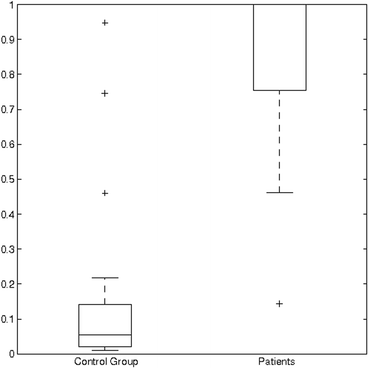Cognitive impairment in cerebellar lesions: a logit model based on neuropsychological testing
- PMID: 28775852
- PMCID: PMC5534033
- DOI: 10.1186/s40673-017-0071-9
Cognitive impairment in cerebellar lesions: a logit model based on neuropsychological testing
Abstract
Background: Damage to the cerebellum may lead to motor dysfunctions, but also to the neuropsychological deficits that comprise the Cerebellar Cognitive Affective Syndrome (CCAS). It can affect executive functions, attention, memory, visuospatial functions, language, and emotions. Our goal was to determine which neuropsychological tests could be effectively used to identify this syndrome during a short examination.
Methods: Twenty-five patients with an isolated cerebellar lesion and 25 matched healthy controls were examined using an extensive neuropsychological battery.
Results: Logistic regression models and sub-models were computed for individual tests, as well as for the full battery. The best results were produced by a model combining patient education level, the number of errors on the California Verbal Learning Test, and time on Prague Stroop Test (Dots).
Conclusions: Based on the results, we suggest that a condensed battery of neuropsychological tests can be used to detect CCAS. The tests are easy to administer and could be helpful in both research and clinical settings.
Keywords: Attention; Cerebellum; Cognition disorders; Executive function; Logistic models; Neuropsychological tests.
Conflict of interest statement
Ethics approval and consent to participate
This study was approved by the Ethics Committee of the Institute for Clinical and Experimental Medicine and Thomayer Hospital n. 645/13 (A 13–04-02).
Consent for publication
All participants signed an informed consent with anonymous publication of their data.
Competing interests
The authors declare that they have no competing interests.
Publisher’s Note
Springer Nature remains neutral with regard to jurisdictional claims in published maps and institutional affiliations.
Figures
References
LinkOut - more resources
Full Text Sources
Other Literature Sources



